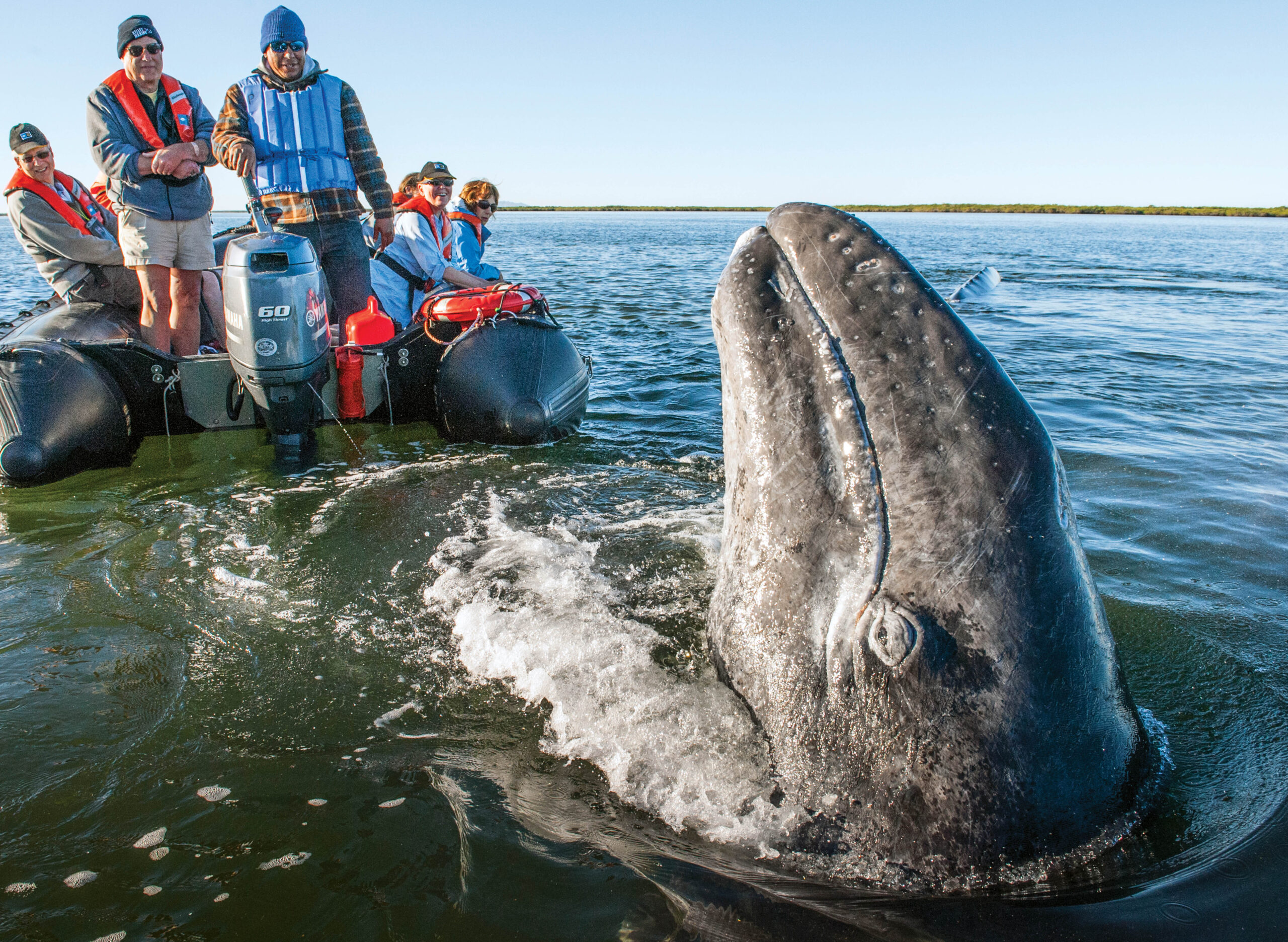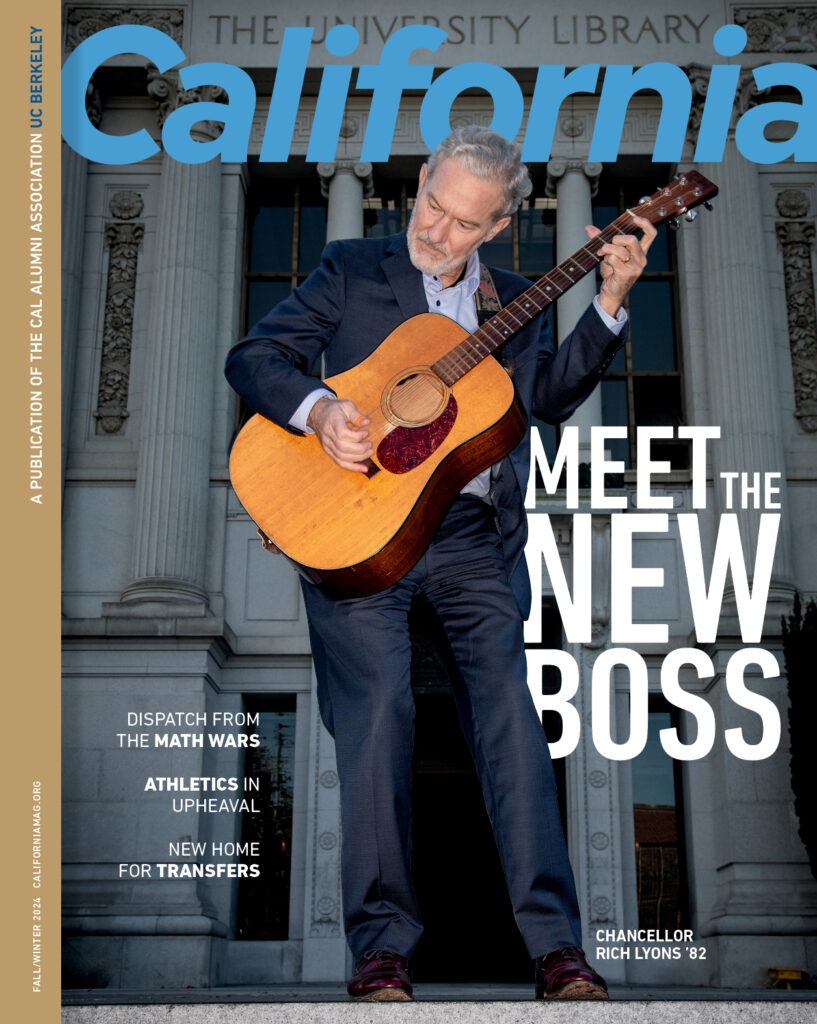Blockchain is all the rage right now, but most people don’t know what it is. Sure, we get that it’s somehow revolutionary, but it’s mostly strange and confusing—much like watching a Lars Von Trier movie or eating a Japanese water cake.
In a desperate attempt to understand this illusive and en vogue tech, I went to Eureka!, a monthly science and comedy show in San Francisco that demystifies science by pairing the wisdom of experts with the wit of local comedians. This month, the subject was blockchain, and the guest of honor was UC Berkeley grad Brian Behlendorf. He’s executive director of the open source block chain company Hyperledger; a developer of Apache, the most popular web server software on the net; and a man who ironically hasn’t updated his personal website in 10 years.
“You have such a career in technology, but with your website, you’re just like—EFF it,” says comedian Kevin Whittinghill, who cofounded Eureka! with self-proclaimed polymath and co-host Allen Saakyan, seated beside him. Whittinghill gestures to a blown-up image of Behlendorf’s site on a screen behind them. A true ghost of 90s past, the site boasts a black background and hard-to-read navy text—with a photo of a young Behlendorf smiling in his t-shirt and ponytail. “The cargo shorts, man!” said comic Torio Van Grol as he pointed to the photo. Behlendorf and the audience roared with laughter.

“So what is blockchain?” asked Saakyan—the moment we’d all been waiting for.
“You can think about it like a new kind of database, a database that is decentralized, that’s shared,” Behlendorf said. The database, he explained, acts as an inalterable record of combined transactions online—a ledger that keeps track of when anything of value is exchanged, like cryptocurrency (e.g. bitcoin), contracts, records, pharmaceutical pills, and digital rights for the music industry.
Why is an inalterable ledger important? Because, explained Behlendorf, it creates a permanent record of a valuable exchange between two people, like a bitcoin transfer, so neither party can make false claims of an exchange. Also, in theory, the shared nature of blockchain makes it un-hackable—in part because there’s no central storage that can be tampered with, and also because there’s no central authority controlling the information exchange.
Basically, blockchain keeps people honest about how they’re using money or exchanging things of value.
“People are excited about a world that is more accountable, more auditable, more fair,” he said. “The reason we don’t do it centralized is we don’t like somebody playing god in the center of our markets.”

To verify the transactions in blockchain, users known as “miners” use computers to solve complex mathematical problems and when they do, they earn a cryptocurrency reward like Bitcoin, or one of the newer currencies like Ether, Lite Coin, Ripple, PotCoin, or even TrumpCoin. (Yes—weed and Donald Trump themed digital money are a thing. People even tried to make a Kanye West inspired CoinyeCoin, but West sued for trademark infringement.)
The hot topic in mining right now isn’t actually the absurd coin names, but rather, the impressive amount of computer processing power required to do the said mining.
Whittinghill asked audience members to guess how much energy, in Kilowatt-hours, a bitcoin transaction uses. “One?” someone guessed. “Not even close,” Behlendorf said. “20?” another said. “Nope,” he replied. “70?” a man shouted. “Close enough. Eureka!” he said, revealing the answer of 77 KWH, which translates to the average amount of energy one household consumes in a week.
This energy use has sparked concerns from critics of blockchain, said Behlendorf, who worry that energy growth rates will become completely unsustainable. Some claim that Bitcoin mining already uses more electricity in a year than all of Ireland, and that it could “drag global energy markets into the abyss.” Of course, the actual amount of energy used by blockchain is hard to predict, considering that the mining of cryptocurrency is a secretive global industry. Any doomsday numbers you run into at this point are purely educated guesses.
“There’s lots of debate about whether it’s worth the energy,” Behlendorf said. “But there are a lot of people in the community trying to reduce the amount of energy used.” Like those who propose blockchain be used to trade solar power to offset the energy suck—and others who suggest a transition to an eco-friendlier power source like HydroMiner, which uses renewable hydroelectric power instead.
Behlendorf didn’t seem too worried about it, noting that the technology is still being perfected; it was only invented ten years ago by the mysterious person or group of people known as Satoshi Nakamoto—a pseudonym that comic Andrew Orolfo said sounds like “a dope, [electronic dance music] name.” The crowd laughed. “Like, ‘I did molly and listened to Satoshi,’” he joked.
When asked if there was any way of possibly tracking Nakamoto down, Behlendorf said that they could be easily traced if they decided to spend the exorbitant amount of bitcoin they’ve no doubt acquired over the years. Nakamoto’s invention would force them to be held accountable for any purchase.
“Anybody who has that kind of money, like Satoshi, if they decided to spend it, lights would go off and they’d be identified because they’d have to use their personal key,” Behlendorf said. “One thing the Department of Justice loves about the Bitcoin ledger is its traceability. Whole visions of the DOJ are using it to track crime networks, to get files back from malware.”
Behlendorf dropped plenty of other blockchain-related factoids during the show—like how Satoshi is also the smallest fraction of a bitcoin. He also mentioned that the highest price ever paid for pizza in bitcoin was 10,000 BTC, the equivalent of $165 million.
He also mentioned the arguably more ridiculous existence of CryptoKitties—digital cats you can buy with crypto-money. You can design, feed, and even breed them with other digital cats and sell them.
“There’s a whole CryptoKitties marketplace,” Behlendorf said. “There’ve been $12 million dollars in digital cat sales.”
“But you can’t pet it?” Whittinghill said. “Useless!”
“Not YET,” an audience member yelled out.
In addition to keeping track of money and records, blockchain could actually improve our overall health: there are a number of organizations working with fishing fleets to set up a common ledger, said Behlendorf, a blockchain for catching fish that track the supply chains to make sure they’re selling what they say they’re selling.
According to Behlendorf, 33 percent of fish sold in markets and restaurants in the U.S. are mislabeled, with up to 90 percent of white tuna mislabeled. This isn’t just a problem because cheap fish like tilapia are being overpriced and sold as red snappers—but because fish like king mackerel, with a high mercury or escolar content that’s toxic in high amounts, are being sold as white tuna.

“They want to track the supply chain from the nets, with sensors on where the nets are, their weight, what’s caught in the net, and where it’s processed,” Behlendorf said.
Expounding on the technology’s potential, he imagined that someday consumers may be able to use blockchain to scan any item in a store and track exactly where it came from, protect medical information in accordance with HIPPA, and even use it as “a business model for investigative journalism—to catch people who perform fraud.”
At present, most of these ideas are hypothetical—much like the question posed to Behlendorf at the end of the show.
“If you were a millionaire, but could only spend your bitcoin on one top-selling black market item, what would it be?” asked Whittinghill, listing the possibilities of exotic animals, narcotics, plastic surgery, etc.
“Well, my wife loves horses and I have a two-year-old daughter who loves animals,” Behlendorf said. “I’m sure there’s some exotic hybrid out there I could get ahold of.”
Maybe a CryptoHorsey?



















